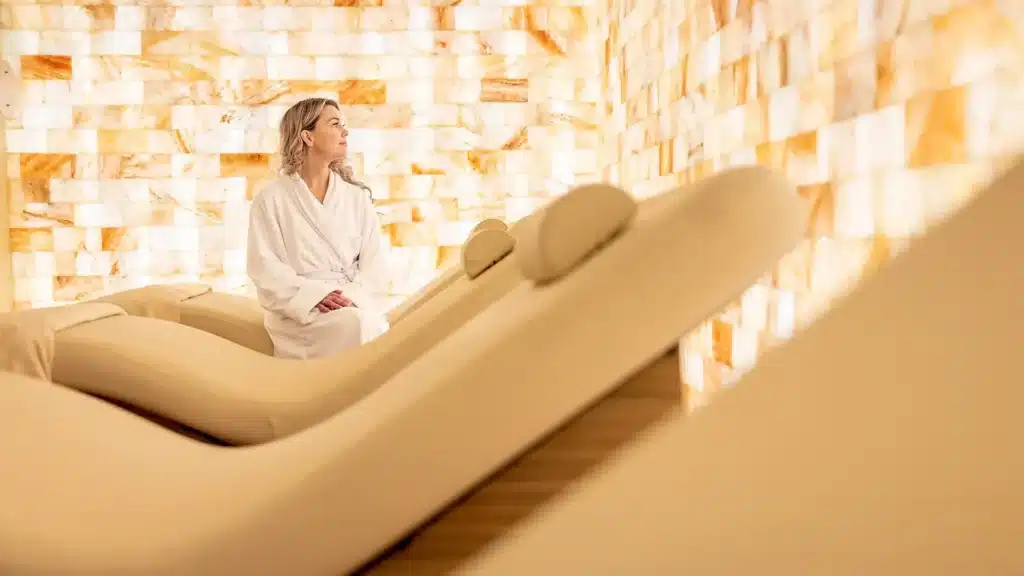
In recent years, you might have heard people talk about halotherapy, also known as salt therapy. From luxury spas to small wellness centers, salt rooms are becoming increasingly popular for their supposed benefits on breathing, skin, and overall relaxation.
But what is halotherapy really? Does it actually work? And most importantly is halotherapy safe for everyone?
At Sobaan Salts, we’ve been working with Himalayan salt for years, and in this blog, we’ll give you a simple and complete guide to understanding halotherapy, its history, benefits, risks, and even how you can try halotherapy at home.
Did You Know?
Halotherapy (salt therapy) dates back to the 1800s, when doctors noticed salt mine workers had fewer respiratory issues than others, sparking worldwide interest in salt-based healing.
Table of Contents
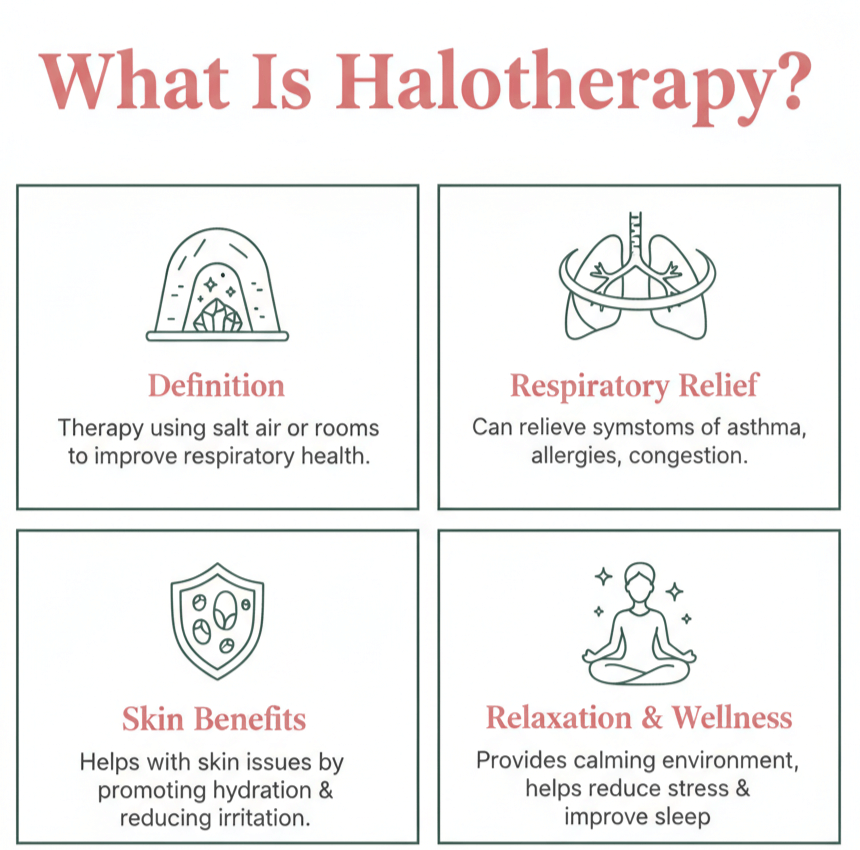
What Is Halotherapy?
Halotherapy is a natural wellness treatment where you inhale tiny dry salt particles in a controlled environment. These particles are usually dispersed into a salt room or booth by a machine called a halogenerator.
The goal? To mimic the clean, mineral-rich air found in natural salt caves. Proponents believe that salt has natural properties that may:
- Open airways and make breathing easier
- Improve certain skin conditions
- Promote relaxation and reduce stress
It’s non-invasive, painless, and generally relaxing which is why it has gained so much attention.
Learn: How To Make Himalayan Salt Bricks Room
Interestingly, halotherapy has also been tested in children with swollen tonsils or adenoids a clinical trial showed that 44.4% of treated kids saw at least a 25% reduction in swelling (double the placebo rate), along with improved hearing and ear pressure.[1]
A Brief History of Halotherapy

The roots of halotherapy go back to Eastern Europe. In the mid-1800s, a Polish physician, Dr. Feliks Boczkowski, observed that salt mine workers rarely suffered from lung issues compared to other miners.
This led to the creation of the first salt therapy facilities, where patients could spend time in salt caves to ease respiratory conditions. Today, modern halotherapy rooms recreate that environment, often with pink Himalayan salt walls and controlled salt particle levels.
Also Explore: Himalayan Salt History
Benefits of Halotherapy
While research on halotherapy is still ongoing, many users report feeling improvements after regular sessions. Here are some of the most discussed halotherapy benefits:
Potential Benefit | How It Helps |
Respiratory Support | Helps clear mucus, reduce inflammation, and ease conditions like asthma, allergies, or bronchitis |
Skin Health | May reduce irritation and soothe conditions like eczema, psoriasis, and acne |
Stress Relief & Relaxation | Salt rooms are calm, quiet spaces that promote relaxation and reduce anxiety |
Better Sleep | Many people feel more rested after sessions due to improved breathing and stress relief |
Immune Boost | Salt has natural antibacterial and antiviral properties that may support immunity |
At Sobaan Salts, we’ve seen growing interest in halotherapy from wellness centers who use Himalayan salt not just for décor but for creating therapeutic spaces.
In fact, people with chronic lung conditions like bronchiectasis reported high satisfaction, 65% felt improvements and experienced no major side effects in one study.[2]
Does Halotherapy Really Work?
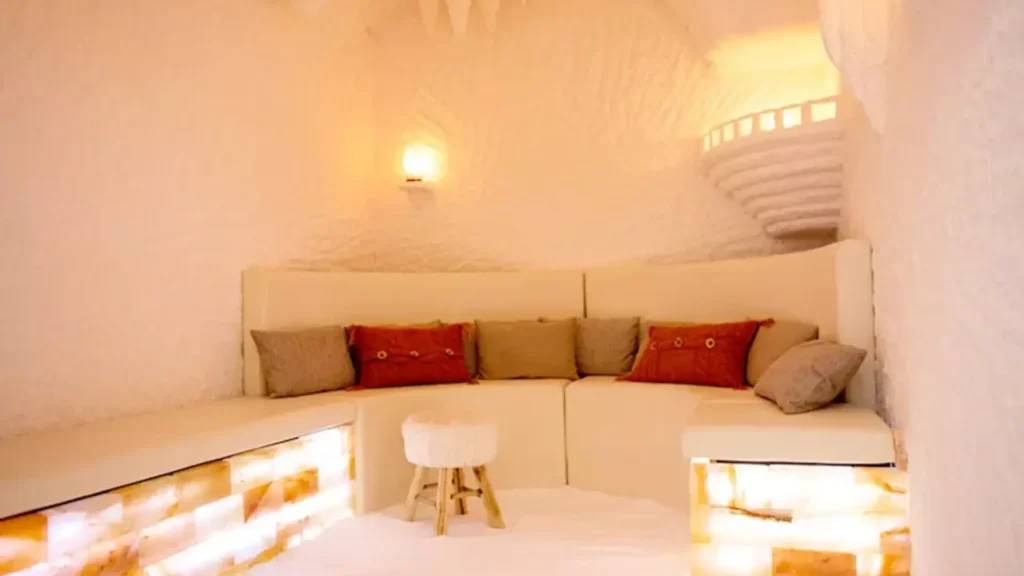
This is one of the most common questions: does halotherapy really work?
The answer is that the results vary. Some studies suggest benefits for asthma, COPD, and skin conditions, while others say more research is needed. What’s clear is that many people report feeling more relaxed, breathing better, and having healthier skin after sessions.
So while halotherapy shouldn’t replace medical treatment, it can be a safe complementary therapy for those looking for natural wellness options.
Read: What Are Salt Scrubs
One of the mechanisms is its ability to calm inflammation studies show that levels of a key inflammatory marker (IL-1β) dropped significantly after treatment.[3]
Is Halotherapy Safe?

For most people, halotherapy is considered safe. However, there are a few precautions:
- People with severe asthma or chronic lung disease should consult a doctor first
- It may cause mild coughing or throat irritation in some individuals
- Staying hydrated before and after sessions is important
- Always choose a reputable facility that maintains hygiene and uses certified halogenerators.
Interestingly, halotherapy has also shown benefits during recovery. One study found that patients’ frailty scores improved from 3.96 to 3.53 after sessions, suggesting improved resilience. [4]
Halotherapy at Home
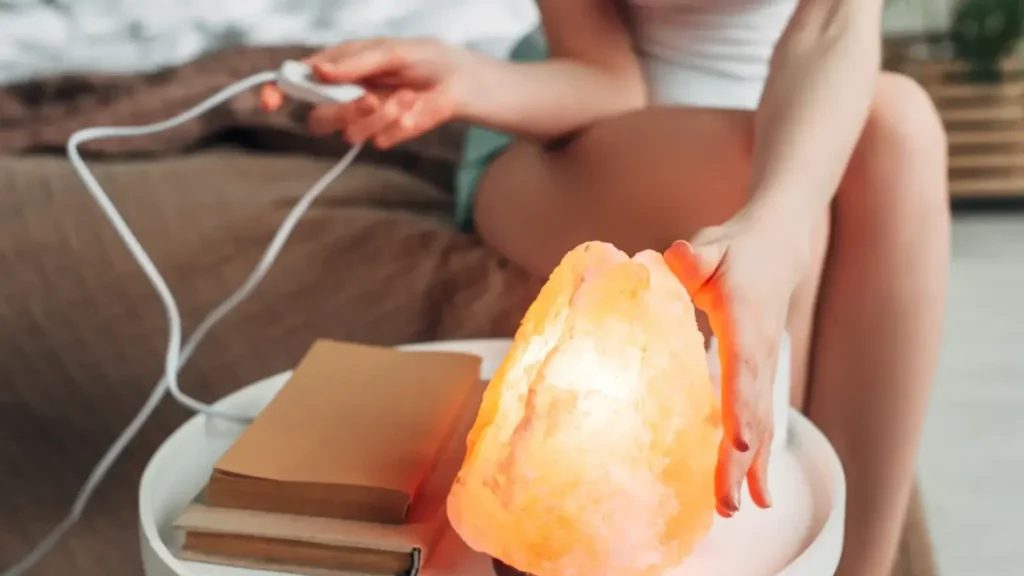
You don’t need to visit a spa to experience salt therapy. Here are a few ways to bring halotherapy at home:
- Salt Inhalers: Small handheld devices with salt crystals for personal use
- Salt Lamps: While not a replacement for therapy, Himalayan salt lamps create a calming environment
- DIY Salt Rooms: Some people design home wellness rooms with Himalayan salt walls from trusted suppliers like Sobaan Salts
- Salt Baths: Adding Himalayan salt to warm baths can help relax muscles and skin
This makes halotherapy more accessible and convenient for everyday wellness routines.
Also Explore: Side Effects Of Pink Himalayan Salt Bath
Who Can Benefit from Halotherapy?
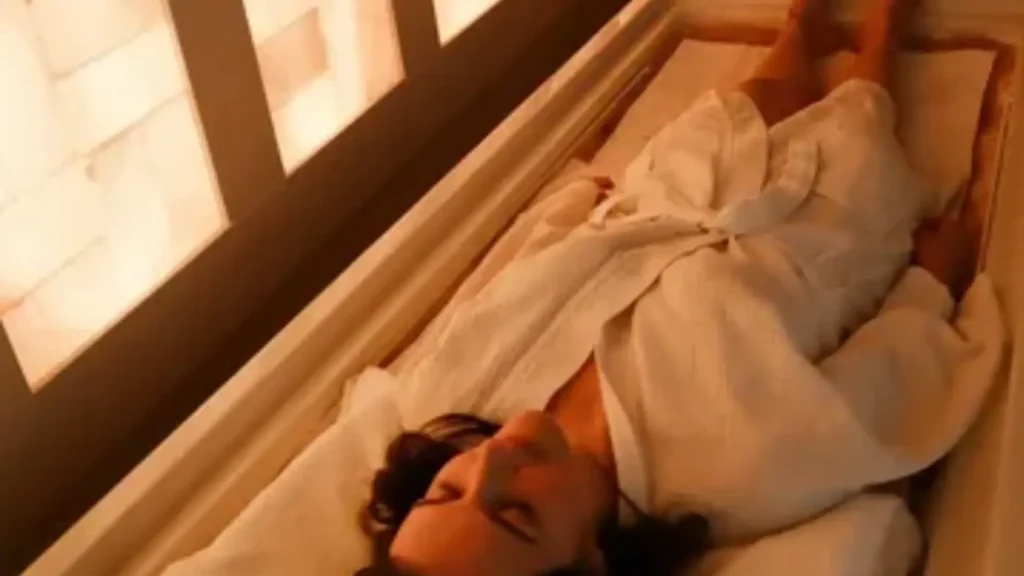
People who often turn to halotherapy include:
- Those with asthma, allergies, or frequent respiratory issues
- Individuals with skin conditions like eczema or psoriasis
- Athletes looking to improve endurance and recovery
- Anyone dealing with stress, anxiety, or poor sleep
Beyond breathing benefits, halotherapy has even been linked to reduced complications with one study noting a 48% drop in major cardiac events and a 59% decrease in renal dysfunction for treated patients.[5]
Risks and Limitations
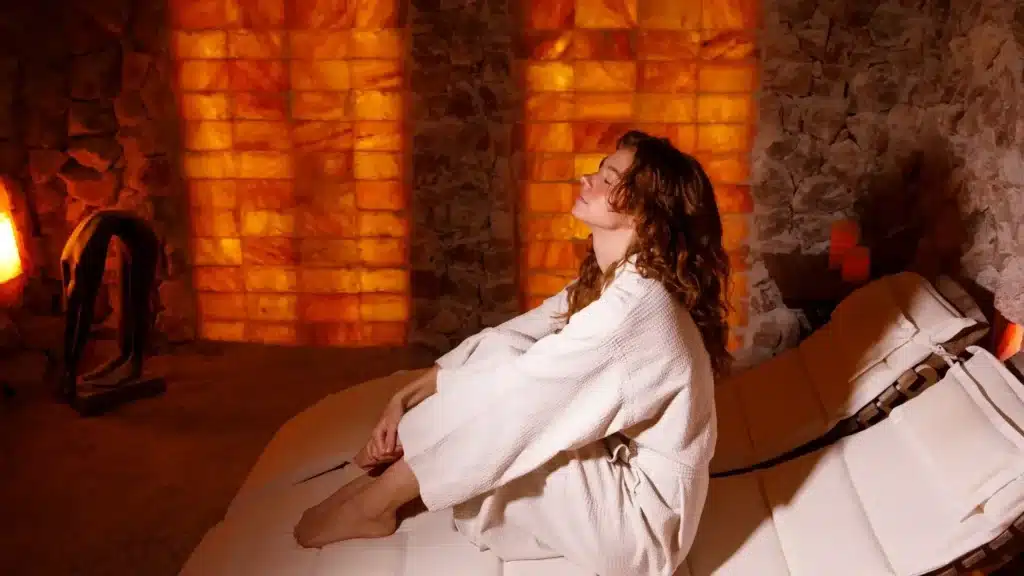
Like any therapy, halotherapy has limitations. It should not be seen as a cure. Possible drawbacks include:
- Temporary coughing or throat dryness
- Limited scientific evidence compared to conventional medicine
- Not suitable for people with severe respiratory problems without medical advice
Always consult your healthcare provider before starting new wellness treatments.
Still, even children with asthma showed encouraging results a pilot study revealed 15–25% better quality-of-life scores after halotherapy. [6]
Key Takeaways
- Halotherapy is salt therapy, inhaling tiny salt particles in a controlled environment.
- It is inspired by old practices in salt caves and mines.
- Potential benefits include easier breathing, healthier skin, stress relief, and better sleep.
- Research is still limited, but many people report positive results.
- It is safe for most people, but those with severe asthma or health concerns should consult a doctor first.
- Halotherapy can be experienced at spas, salt rooms, or even at home with devices, lamps, or Himalayan salt setups.
- At Sobaan Salts, we provide natural Himalayan salt products that make wellness practices like halotherapy more accessible.
Final Note: Halotherapy is not a medical cure, but it can be a natural, relaxing, and supportive wellness practice.
The global salt therapy market, which encompasses halotherapy practices and related wellness services, is projected to grow significantly due to rising interest in natural therapies. It is estimated at USD 8.59 billion in 2025 and expected to reach USD 19.05 billion by 2034, expanding at a CAGR of 9.3% driven by demand for respiratory and skin health solutions.
Source: Precedence Research – Salt Therapy Market Size to Surpass USD 19.05 Billion by 2034
References:
- Kowalska-Olędzka, E., Halotherapy in the Treatment of Skin Diseases. PDF Source.
https://www.academia.edu/110554600/Halotherapy_in_the_Treatment_of_Skin_Diseases - Kowalska, E., et al. (2021). Halotherapy as a Complementary Therapy for Respiratory Conditions. MDPI Healthcare, 9(11), 1604.
https://www.mdpi.com/2227-9032/9/11/1604 - Nowak, M. (2022). The Role of Halotherapy in Modern Preventive Medicine. Scientific Research and Education in Innovation Fields (SREIF).
https://archive.sreif.us/index.php/mpm/article/view/178 - Piotrowski, W., et al. (2023). Halotherapy in Health and Wellness: An Overview. Journal of Education, Health and Sport.
https://apcz.umk.pl/JEHS/article/view/40108
Share This Post
Article By

